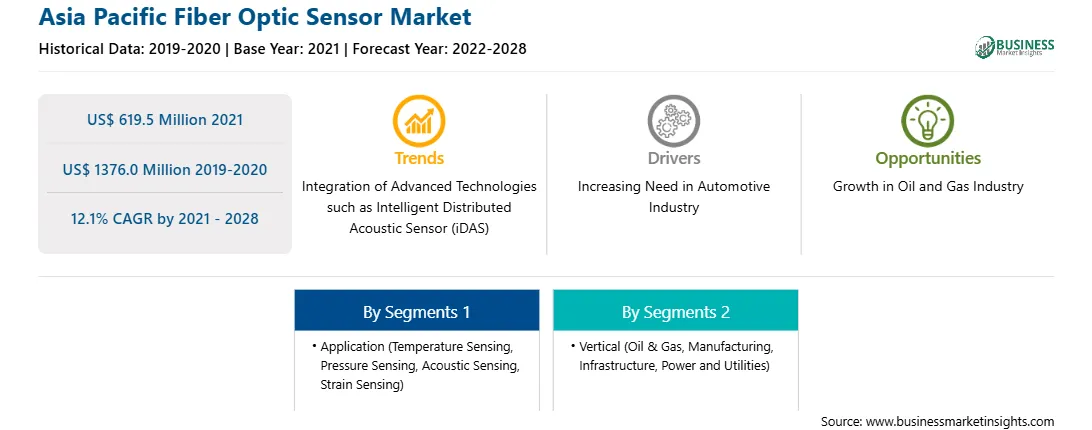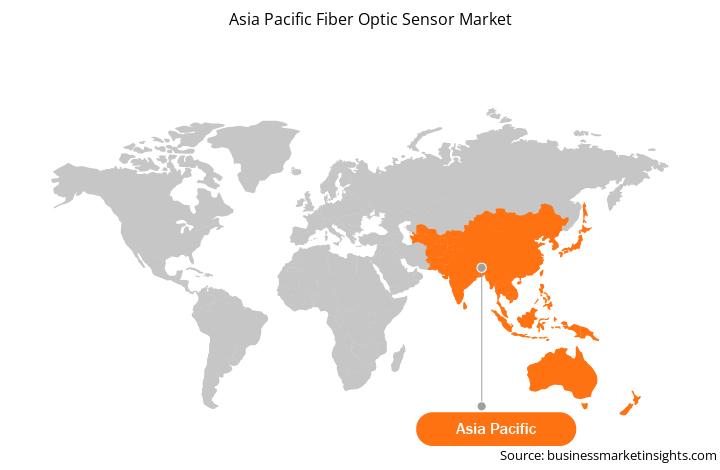This research report on the “Fiber optic sensor Market” provides a holistic view of the market size across major regions. The report further elucidates the key driving factors, restraints, growth opportunities, and future trends pertaining to the market growth.
Moreover, the surging applications in oil & gas sector is expected to bolster the market growth during the forecast period.
Japan and India are the other two countries that have large number of electronics and semiconductor manufacturers as well as end users. These two countries have also registered higher number of COVID-19 infected cases and are still continuing the battle against the spread. Though the countries have eased the lockdown norms and have allowed the manufacturing plants to operate, the decrease in demand and supply has been severely affecting the fiber optic sensors market player in both the countries. The recovery period is expected to be by late 2021 as the entire electronics and semiconductor manufacturing sector has been rigorously affected.

Strategic insights for the Asia Pacific Fiber Optic Sensor provides data-driven analysis of the industry landscape, including current trends, key players, and regional nuances. These insights offer actionable recommendations, enabling readers to differentiate themselves from competitors by identifying untapped segments or developing unique value propositions. Leveraging data analytics, these insights help industry players anticipate the market shifts, whether investors, manufacturers, or other stakeholders. A future-oriented perspective is essential, helping stakeholders anticipate market shifts and position themselves for long-term success in this dynamic region. Ultimately, effective strategic insights empower readers to make informed decisions that drive profitability and achieve their business objectives within the market.

| Report Attribute | Details |
|---|---|
| Market size in 2021 | US$ 619.5 Million |
| Market Size by 2028 | US$ 1376.0 Million |
| Global CAGR (2021 - 2028) | 12.1% |
| Historical Data | 2019-2020 |
| Forecast period | 2022-2028 |
| Segments Covered |
By Application
|
| Regions and Countries Covered | Asia-Pacific
|
| Market leaders and key company profiles |
The geographic scope of the Asia Pacific Fiber Optic Sensor refers to the specific areas in which a business operates and competes. Understanding local distinctions, such as diverse consumer preferences (e.g., demand for specific plug types or battery backup durations), varying economic conditions, and regulatory environments, is crucial for tailoring strategies to specific markets. Businesses can expand their reach by identifying underserved areas or adapting their offerings to meet local demands. A clear market focus allows for more effective resource allocation, targeted marketing campaigns, and better positioning against local competitors, ultimately driving growth in those targeted areas.

The Asia Pacific fiber optic sensor market is projected to reach US$ 1376.0 million by 2028 from US$ 619.5 million in 2021; it is anticipated to grow at a CAGR of 12.1% from 2021 to 2028. In the automotive sector, fiber optic sensors are used in lighting applications. The fiber transmits cold light, making it a safe alternative to traditional sealed beam or halogen lighting. Apart from the safety advantage, the light source is easily accessible and offers greater freedom of design. The deployment of fiber optics also allows for the separation of light source and output location, thus providing high-performance lighting options with reduced physical space requirements, making them suitable for difficult and restricted access locations. The sensors are also used in automobiles in onboard safety devices and systems, such as operating airbags, traction control devices, and safety systems. According to the Organisation Internationale des Constructeurs d'Automobiles (OICA), ~91.3 million vehicles were sold across the world in 2019. Further, rising disposable incomes, mainly in emerging countries in APAC, promotes the sales of passenger vehicles, which, in turn, would fuel the adoption fiber optic sensors. Thus, the rising annual automotive sales is a significant factor contributing to the growth of the fiber optic sensor market.
In terms of vertical, the oil & gas segment accounted for the largest share of the Asia Pacific fiber optic sensor market in 2020. Further, based on application, the temperature sensing segment held the largest market share in 2020.
A few major primary and secondary sources referred to for preparing this report on the fiber optic sensor market in Asia Pacific are company websites, annual reports, financial reports, national government documents, and statistical database, among others. Major companies listed in the report are Omnisens SA, Solifos AG, Baumer Holding AG, Keyence Corporation, OMRON Corporation, Luna Innovations Inc., SICK AG, and Yokogawa Electric Corporation.
By Vertical
By Application
By Country
The Asia Pacific Fiber Optic Sensor Market is valued at US$ 619.5 Million in 2021, it is projected to reach US$ 1376.0 Million by 2028.
As per our report Asia Pacific Fiber Optic Sensor Market, the market size is valued at US$ 619.5 Million in 2021, projecting it to reach US$ 1376.0 Million by 2028. This translates to a CAGR of approximately 12.1% during the forecast period.
The Asia Pacific Fiber Optic Sensor Market report typically cover these key segments-
The historic period, base year, and forecast period can vary slightly depending on the specific market research report. However, for the Asia Pacific Fiber Optic Sensor Market report:
The Asia Pacific Fiber Optic Sensor Market is populated by several key players, each contributing to its growth and innovation. Some of the major players include:
The Asia Pacific Fiber Optic Sensor Market report is valuable for diverse stakeholders, including:
Essentially, anyone involved in or considering involvement in the Asia Pacific Fiber Optic Sensor Market value chain can benefit from the information contained in a comprehensive market report.